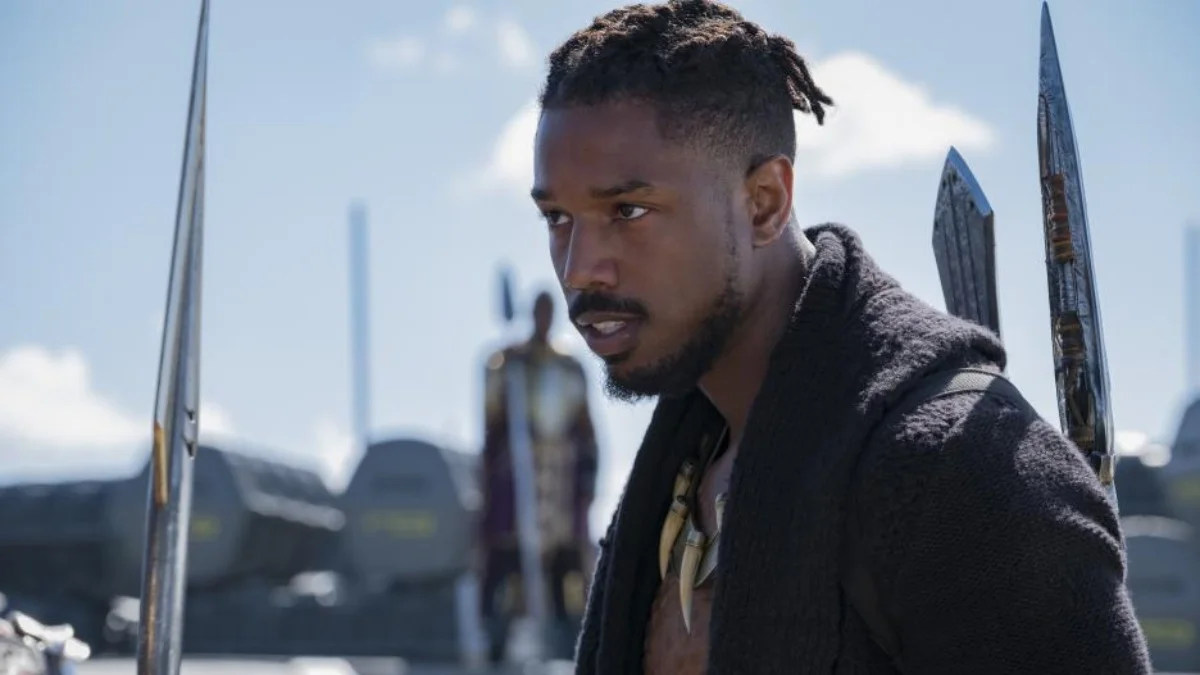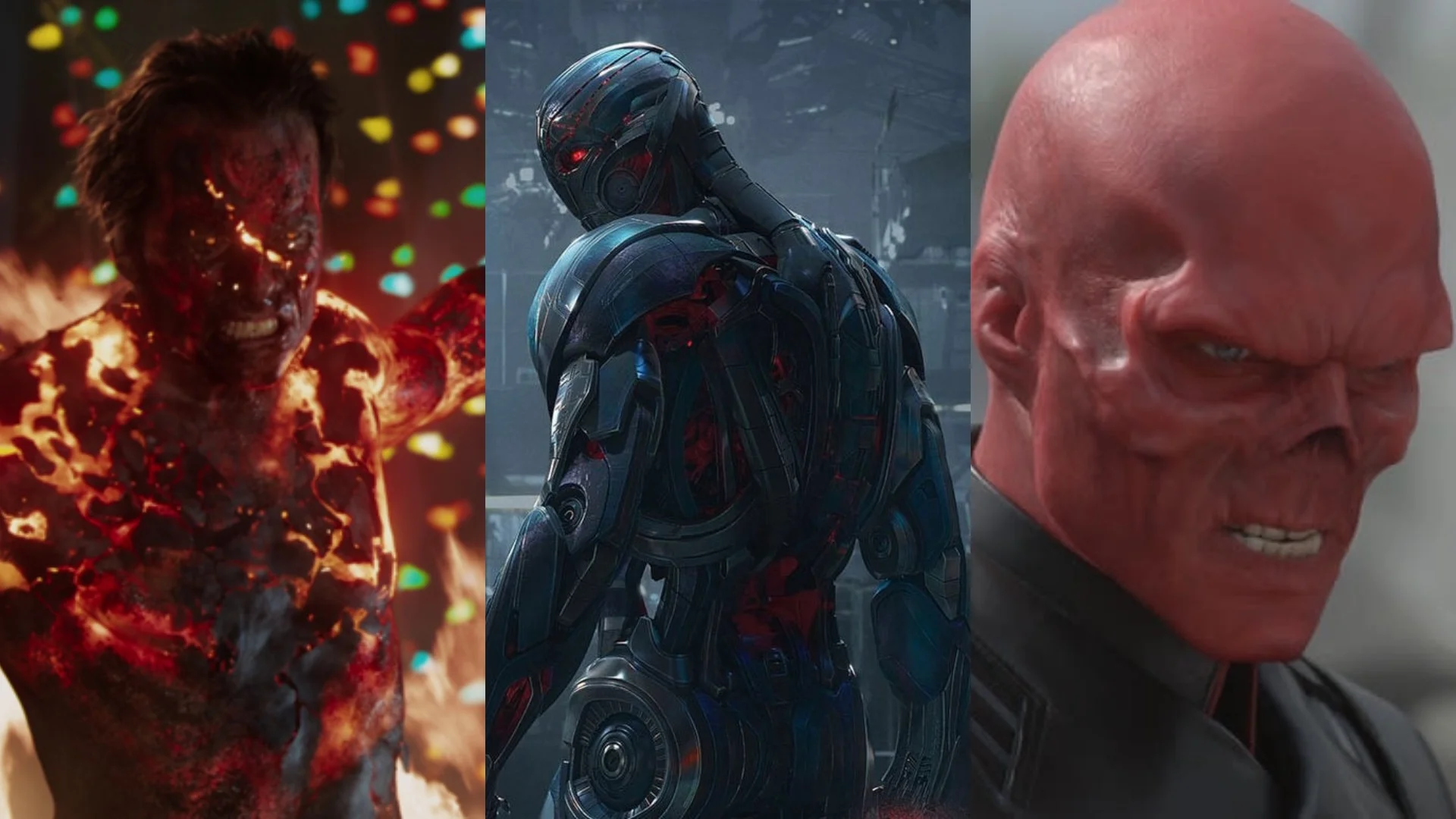Why The MCU Doesn't Actually Have a Villain Problem
Black Panther took the world by storm this weekend and rightly so. The film is bolstered by fantastic filmmaking by Ryan Coogler, worldbuilding unprecedented for a superhero movie, and an unbelievable cast. While several characters could be chosen as the “break out” characters, much discussion lies around the villain of the piece: Erik “Killmonger” Stevens. Killmonger is a villain driven by legitimate pain and anger who also happens to be a murderer and terrorist. It’s easy to see how people could join his cause but also like, calm down, dude. In the recent upswing of reception to MCU villains, Killmonger is easily the highpoint.
Killmonger’s status as a villain is levied by powerfully real systemic issues. These issues have been in place for generations, something Black Panther actively discusses and tackles in its story. He’s sympathetic, ultimately correct in his understanding of the world but is willing to hurt innocent people to realize his goals. In another life, he and T’Challa would be brothers in arms in the fight against pillars of prejudice.
Flashback to six months ago, in spite of the overall success and popularity of the Marvel Cinematic Universe, there was always one consistent complaint about Marvel villains. “Their villains suck” or some variation of that phrase has become commonplace with the nerdiest of discussions. There are some outliers who have won audience favor, occasionally being praised as the one that broke some Marvel villain curse.But with positive receptions to the last several villains, maybe it’s time to stop this criticism? Hell, maybe they weren’t all that bad in the first place?
Granted, most of the villains aren’t great. Yellowjacket was a bust. Malekith is borderline nonexistent. I often forget The Incredible Hulk has a villain. But the rest? In the pantheon of big blockbuster movies, they’re hardly terrible. And even Yellowjacket and Malekith have interesting designs and entertaining final set pieces. They’re giant beat em up sequences and carry no emotional weight to their actions. They hardly pushed their heroes to new territory, the confrontations were physical but lacked ideological weight. The rogues gallery hardly contribute to the overall themes of each movie. Yet, the ones that do never get recognized as such.
Let’s talk about the MCU villains from 2017. In Thor: Ragnarok, Hela, the Goddess of Death, is a literal embodiment of death and manifestation of Asgard’s colonial and imperialist roots. Blanchett also hams it up, solidifying herself as the MCU equivalent of Maleficent while finally pushing Thor to new character heights for the first time since Loki was his primary antagonist.
Spider-Man: Homecoming is the cinematic debut of Adrian Toomes/Vulture. In this iteration, he’s the ringleader of a gang of super tech-powered criminals trying to make a living after getting screwed over by capitalist America. Can you blame this guy for wanting to make sure his family is taken care of? Admittedly, he gets greedy and goes too far but he isn’t a complete monster. Toomes shows Peter Parker a side of the world the young hero hadn’t understood as of yet. In doing so, Peter rejects the corporate machine of Tony’s Avengers and decides to live his life as a hero on his own terms.
With Guardians of the Galaxy: Volume 2, Ego is… ego. Literally just ego. He even makes his appearance directly after a major dick measuring contest between Rocket and Quill. It’s in the name and it ain’t subtle but that doesn’t mean James Gunn’s interpretation is anything less than brilliant. Ego the Living Planet presents temptation and pride in their worst forms, promising Peter eternal youth at the expense of everything that makes him human. Peter’s imperfections hold him back maturity wise but he comes to learn humility and empathy through his confrontation with Ego.
Phase 3 has been on a winning streak with their antagonists but even some less revered villains like Killian, Red Skull and Ultron still have plenty to offer in their own right.
Killian’s interpretation of “The Mandarin” is an ideological boogeyman, using ignorant Western fears of terrorist iconography to strike fear into America while he builds a weapons empire and profits off a war on both sides. It’s not the character from the comic but at some point it’s time to let those things go. These aren’t the comics, they’re movies. For them to truly stand on their own, they have to tell stories of their own accord.
Red Skull isn’t as complex as the other quality villains but he’s an evil super nazi that looks like death played by Hugo Weaving. Nazis deserved to get punched and shot into space, both of which happen to this evil scene stealer. Sometimes simple is just as effective. Red Skull is also a great first juxtaposition to Steve Rogers in his early Cap days. The serum made Rogers into a stronger human with an even bigger heart. Red Skull becomes a monster who is so hateful he becomes a super Nazi. That’s scary enough in its own right.
A personal favorite of mine, Ultron is an artificial intelligence who spends roughly 30 seconds on the world wide web before deciding humanity needs to be exterminated. An understandable position to take but his identity is also fascinating in how he’s essentially a dirty mirror held up to the Avengers. Ultron tells them, “You want to save the world but you don’t want it to change.” The living automaton understands people are inherently dangerous to the world around them given history but can’t comprehend the value of human life. People can’t be compressed down to numbers and biological equations. It’s a big topic for any movie to cover, let alone the sequel to one of the highest grossing movies ever. It gets slightly tragic when Ultron at death’s door still just scoffs at the cosmic irony and beauty of humanity.
None of this means Marvel won’t have another merely serviceable villain or something to add to a “Worst of” list. They’re an ongoing franchise and no streak lasts forever. But the next time someone talks about the supposed “Marvel Villain Curse,” let’s try to keep things in perspective. The villain is probably at least serviceable. In some instances, their impact is worth exploring long after the credits have run off the screen. And others will just continue looking at you like you’re crazy when you say who your favorite MCU villain was before Killmonger (No, seriously, Ultron is a great villain). You know what? They could be a whole lot worse.


















